Although the detailed comparison of grating LSF models to flight data
properly belongs with the calibration and IPI teams, it is instructive
to compare the initial LSF library data to actual flight
data. Calibration observations of the star Capella are presented below
for the HETG + ACIS-S and for the LETG + HRC-S.
Observations of Capella (Obsids 1103, 1235, 1318 are merged for a
total of ![]() 88ksec with plus and minus orders added) are fit
with a Gaussian convolved with the RMF (Gaussian fits) and are
shown at the top of the page in the following plots and with a
88ksec with plus and minus orders added) are fit
with a Gaussian convolved with the RMF (Gaussian fits) and are
shown at the top of the page in the following plots and with a
![]() -function convolved with the RMF (
-function convolved with the RMF (![]() -function fits) and
are shown in the lower part of the page. The Capella data for LETG is
from obsid 1167 and has an approximate observation time of 15.2 ksec.
The LETG data is fit using the RMF's described in §2.
-function fits) and
are shown in the lower part of the page. The Capella data for LETG is
from obsid 1167 and has an approximate observation time of 15.2 ksec.
The LETG data is fit using the RMF's described in §2.
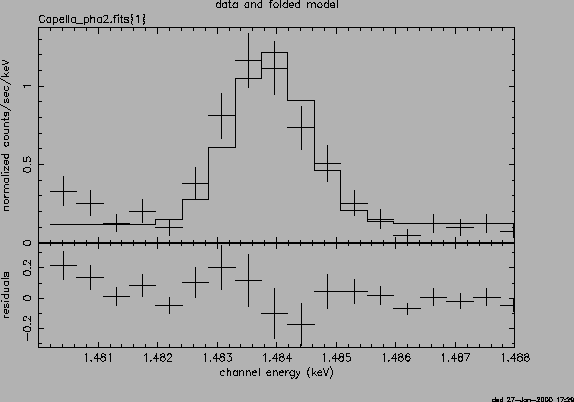
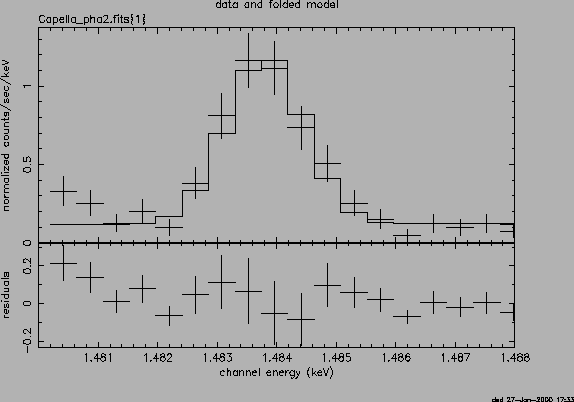
|
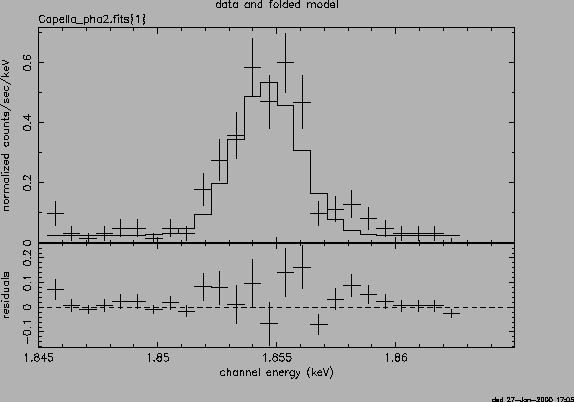
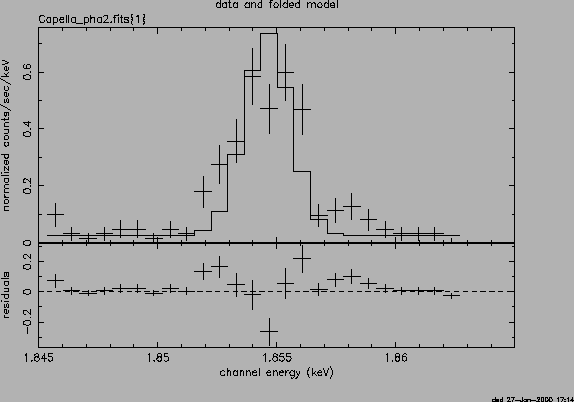
|
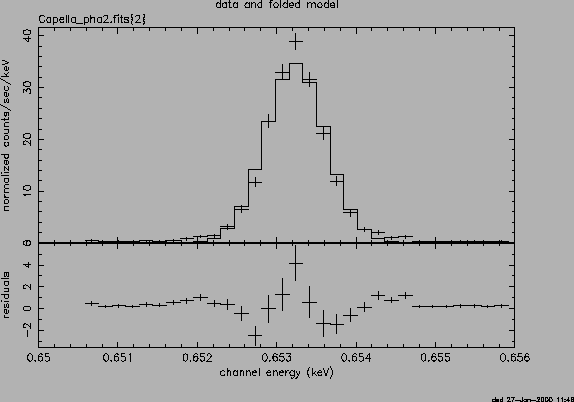
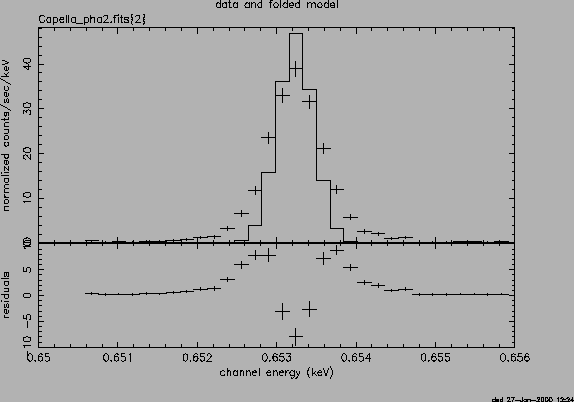
|
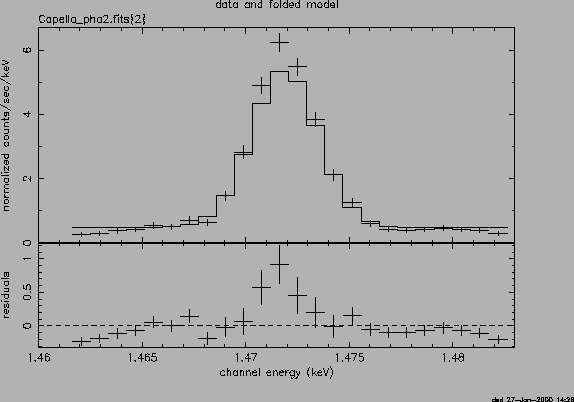
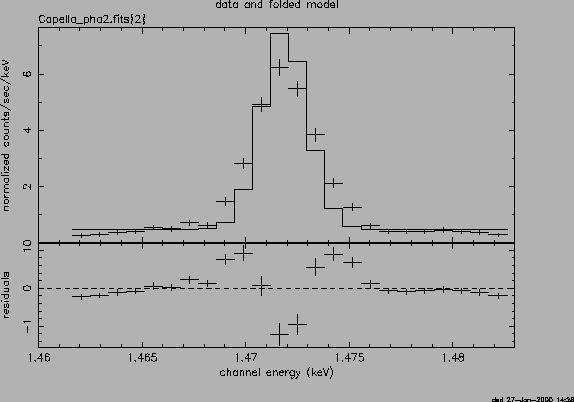
|
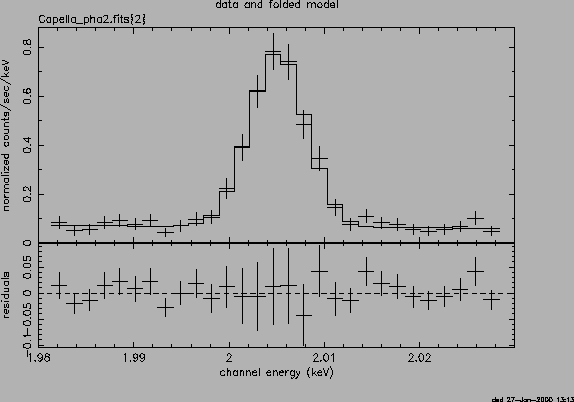
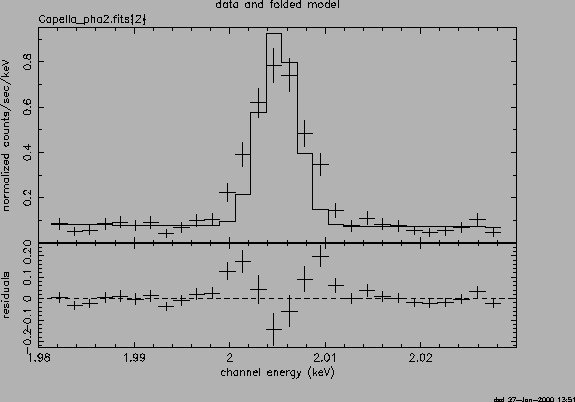
|
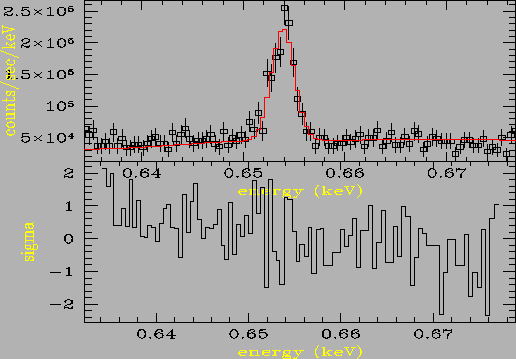
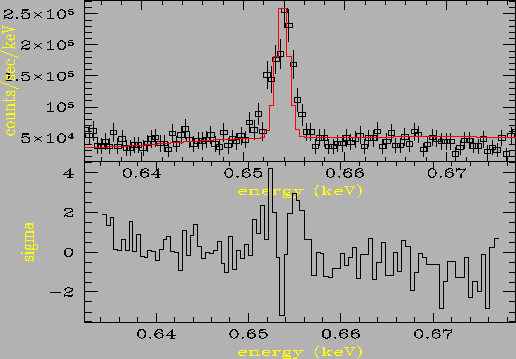
|
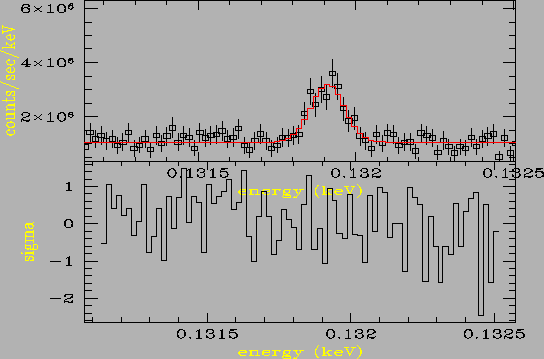
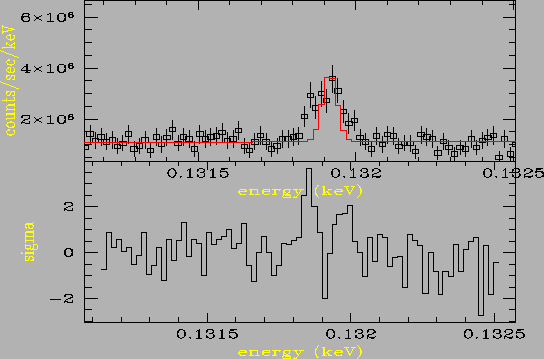
|
In general, the RMF's allow accurate fitting to done with the data from
the gratings. The HEG data for the Mg XII line shows no evidence of being
more extended than the LSF at that energy (see figure 14
and 15). The data for the Si XIV line (figure
16 and 17 ) shows some evidence for
a more complex structure and there may be a weak line in the wings of the
Si line at higher energy. When fitting the line with a Gaussian the
![]() was reduced by 2.5 for 16 degrees of freedom from the fit
using the
was reduced by 2.5 for 16 degrees of freedom from the fit
using the ![]() -function and is not significant (see fig 17).
So both of these lines are well fit using the existing HEG RMF data.
-function and is not significant (see fig 17).
So both of these lines are well fit using the existing HEG RMF data.
The MEG data for Capella has significantly more counts than the HEG data
and therefor should be more sensitive to an extended component in the
wings. Figure 18 shows the O VIII Ly![]() line fit
with a Gaussian and the redidual plot (lower panel) shows excess counts
in the core and in the wings. This can also be seen in the 1
line fit
with a Gaussian and the redidual plot (lower panel) shows excess counts
in the core and in the wings. This can also be seen in the 1![]() m fits
(see figure 6). This same effect can also be seen in
the fit with just the LSF (figure 19). As the spectral
resolution decreases with decreasing wavelength the MEG data shows
less of a need for an extended Gaussian component (Figure
20, 21, 22,
and 23). The data for the Si XIV line is consistent
with the LSF.
m fits
(see figure 6). This same effect can also be seen in
the fit with just the LSF (figure 19). As the spectral
resolution decreases with decreasing wavelength the MEG data shows
less of a need for an extended Gaussian component (Figure
20, 21, 22,
and 23). The data for the Si XIV line is consistent
with the LSF.
The LETG data for Capella along with the fits and residuals for Oxygen
VIII Ly-![]() at 18.97Å and for Fe XVIII at 93.93Å are shown in
figures 24, 25, 26,
26. For both of these lines the
at 18.97Å and for Fe XVIII at 93.93Å are shown in
figures 24, 25, 26,
26. For both of these lines the ![]() -function
fits are broader than the fits with a Gaussian profile.
The core of the line seems to be well represented by the
-function
fits are broader than the fits with a Gaussian profile.
The core of the line seems to be well represented by the
![]() -function convolved with the RMF of the instrument but
the wings are not well fit with this model (see figures
25, 23).
-function convolved with the RMF of the instrument but
the wings are not well fit with this model (see figures
25, 23).
In summary the current RMFs can be used successfully to fit flight data from the HETG aboard Chandra. Some care must be taken not to over-interpret the data low energies (high spectral resolution) given That the current RMF's have large residuals in that region. At higher energies the current RMF's provide an excellent fit to the data. For the LETG data the wings of the LSF are significant and slightly broader than the Gaussian model in the current RMF's. So any model fitting with the current RMF's for the LETG data will generate fairly substantial residuals in the wings of the lines.